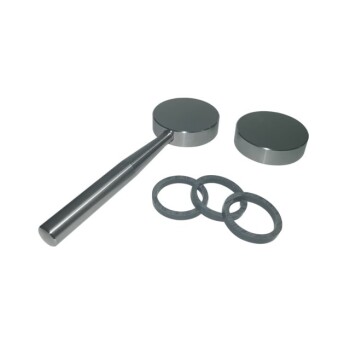X-Ray Fluorescence (XRF) is a versatile, non-destructive analytical technique used to determine the elemental composition of materials.
It is widely used across various industries for its ability to provide accurate, real-time analysis without damaging the sample.
XRF works by exciting the elements within a sample with X-rays, causing them to emit secondary X-rays that are unique to each element.
This emitted radiation is then detected and analyzed to determine the elemental composition of the sample.
5 Key Insights You Need to Know About XRF

1. Principle of XRF
Excitation and Detection: XRF involves exciting the sample with primary X-rays, causing the elements within the sample to emit secondary X-rays.
These secondary X-rays are detected by the analyzer, which then performs complex calculations to determine the elemental composition.
Element Identification: Each element produces a unique fluorescent spectrum, which allows for precise identification and quantification of the elements present in the sample.
2. Capabilities of XRF
Multi-element Detection: XRF can detect multiple elements simultaneously, making it suitable for analyzing complex material systems.
Non-destructive Testing: The sample remains intact throughout the analysis, which simplifies sample preparation and preserves the sample's integrity.
3. Applications of XRF
Material Science: XRF provides accurate element content data for materials such as metals, alloys, ceramics, and glass, supporting material research and development.
Geology: It quickly and accurately analyzes the elemental composition of rocks and ores, aiding in geochemical and mineralogical research.
Industrial Applications: Common uses include metal scrap sorting, alloy grade identification, quality control in metal manufacturing, and testing industrial materials like cement or coal.
Consumer Product Testing: XRF is used to test for lead in paint and other contaminants in consumer products.
4. Limitations of XRF
Light Elements: XRF cannot measure the lightest elements (below magnesium) due to their weak fluorescent X-rays.
Chemical Structure: XRF only provides information on the elemental composition and does not reveal the chemical structure of the sample.
5. Advantages of Portable XRF
Field Analysis: Portable, handheld XRF devices allow for on-site analysis of large or unwieldy samples, enabling real-time decision-making and reducing the need for lab transport.
Speed and Availability: The speed and availability of results often outweigh the power limitations of portable devices, making them invaluable in production processes.
6. Safety of XRF
Radiation Concerns: While XRF involves the use of X-rays, it is generally considered safe for use.
Proper handling and adherence to safety protocols minimize any potential risks associated with radiation exposure.
In summary, XRF is a powerful analytical tool that offers non-destructive, multi-element detection capabilities across various fields.
Its ability to provide real-time, accurate elemental analysis makes it an essential instrument for industries requiring precise material characterization and quality control.
Continue Exploring, Consult Our Experts
Discover how KINTEK SOLUTION's advanced XRF technology can transform your material analysis.
Our state-of-the-art instruments provide non-destructive, multi-element detection with unparalleled precision.
Don't let limitations hold you back—empower your operations with KINTEK SOLUTION's cutting-edge XRF solutions.
Ready to elevate your material science research and quality control? Get in touch today to learn more about our tailored solutions for your needs.











